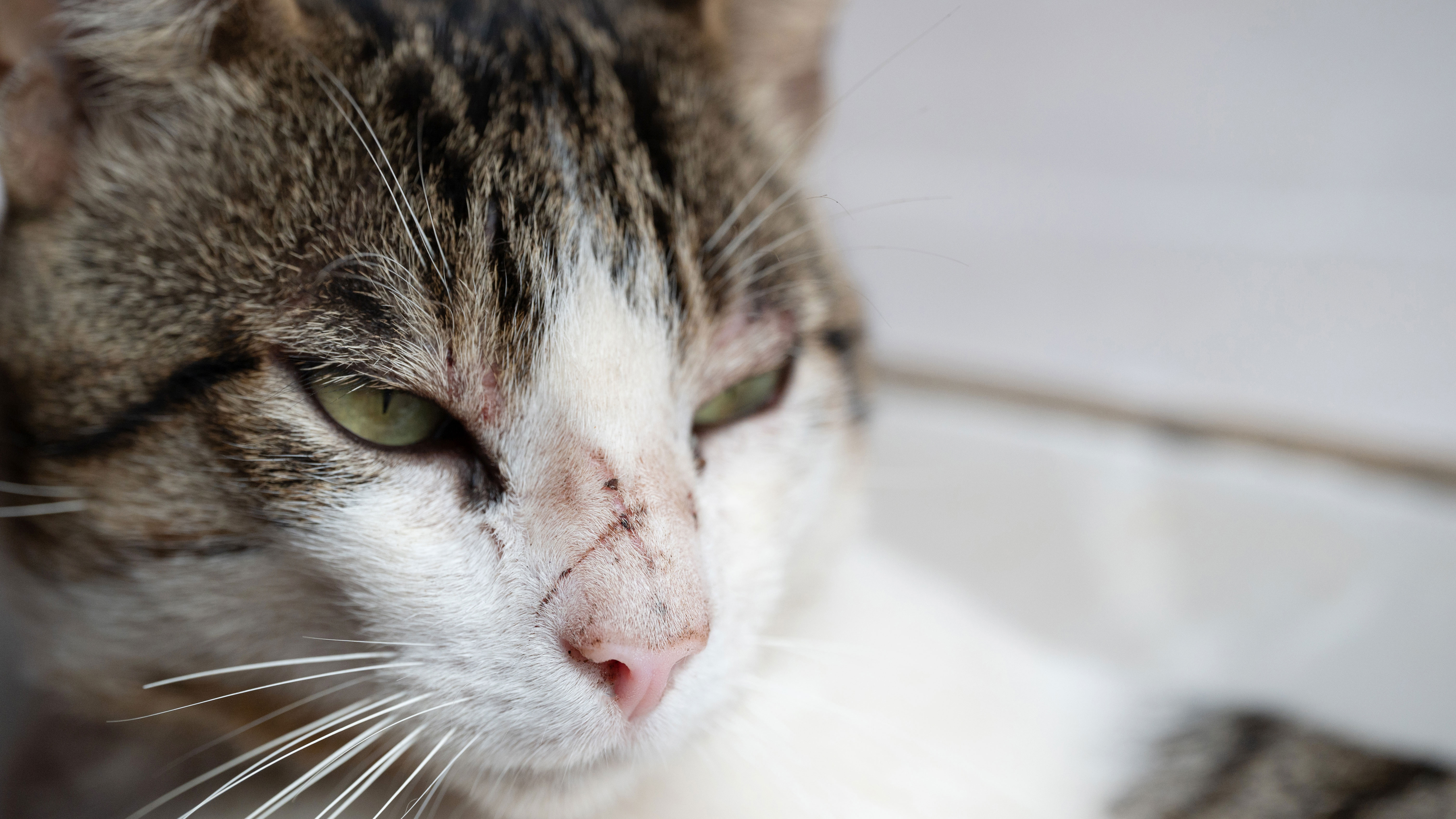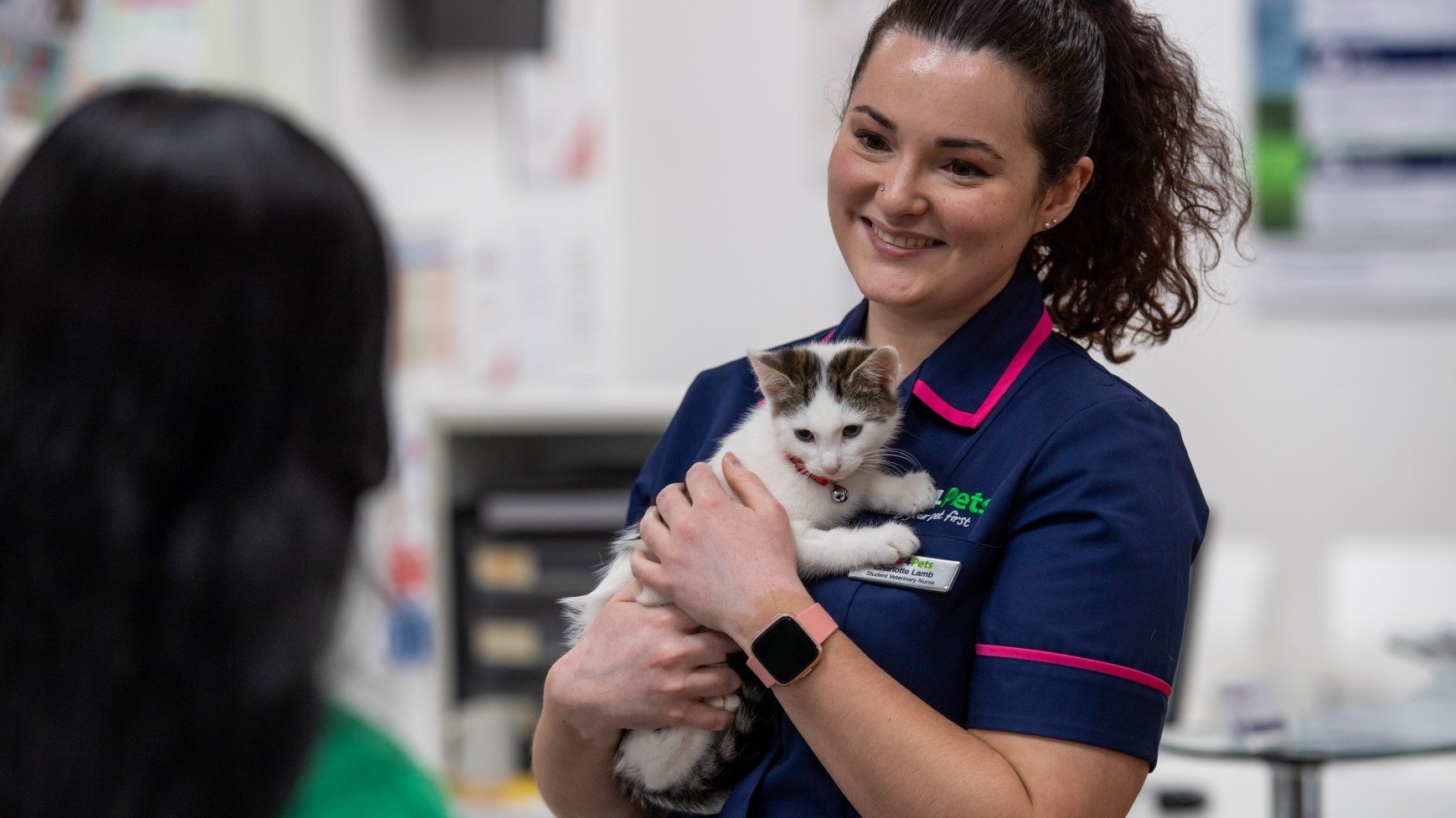
Cat fight wounds and injuries
It's not uncommon for cats to fight and it's important that any wounds or injuries are properly treated.
How to tell if your cat has been fighting
Sometimes, cat fight wounds are obvious – your cat may have a torn or scratched ear or a wound on their skin. Typically, cat fight injuries are puncture wounds, because cats tend either to swipe each other with their claws or they bite, using their long canine teeth.
If your cat has been involved in a fight, you might suspect from their behaviour that they have suffered a scare or a traumatic event. Often, the signs of a cat fight are subtle and your cat might just seem jumpy and on edge, subdued or lame. They may rush indoors and hide, because cats often feel upset and traumatized after a fight.
Once your cat has calmed down, and if they’ll let you, the best way to check your cat for fighting wounds is by using your fingertips. Very soon after a cat gets bitten or clawed, before the wound begins to swell, a tiny bead of dried blood or serum (clear fluid) usually appears on the punctured skin. These can take time to find, but they are much more obvious to feel than to see.
Types of cat fight injuries
A cat fight scratch wound normally needs to be managed differently to a puncture wound.
For instance, a scratch wound on the ear might bleed a little at first but, once it has been cleaned, you will be able to keep an eye on it for a few days and you’ll notice if it starts to look swollen, sticky or infected, or if your cat seems to be paying it a lot of attention.
Puncture wounds are difficult to spot because they don’t normally bleed much. The skin over a puncture wound often heals over quickly. This seals in all the bacteria and dirt deep within the tissue and prevents oxygen from getting in, which can promote the growth of certain infection-causing micro-organisms.
You might not be aware there is a puncture wound unless your cat seems tender or painful when you touch the area, or if the infection causes the wound to swell.
Puncture wounds can’t really be cleaned on the surface, as there is nothing much to clean. If you do find a puncture wound from a cat fight, it is a good idea to trim away some hair from the area so that you can locate it if you need to show your vet, and so that you can monitor it for any developments over the next couple of weeks.
Cat fight wound care
Once you’ve found clear evidence of a cat fight wound, you’ll need to decide how to care for it.
To clean a cat fight wound, you can either use an appropriately-diluted solution of a veterinary wound wash – making sure it is suitable for cats – or you can use warm salty water.
As a guide, a rounded teaspoon of table salt dissolved in a mug of warm water is about the right strength. Salty water won’t hurt your cat if they should lick at the area after you’ve bathed it and it won’t interfere with the healing process.
If your cat will let you, use cotton wool pads, dipped in the wound bathing solution to remove any dried blood or other material from the surface of the wound. Discard each pad, rather than dipping it back in the solution. Cats don’t usually like sprays so, if you’re using a proprietary wound cleansing spray, put that on to cotton wool, rather than spraying it straight onto the wound.
If you find puncture wounds on your cat, it’s a good idea to speak to your vet team about getting them checked. Puncture wounds from cat fights are normally quite painful and often require some pain relief.
You’ll also need to arrange for your cat to be checked by your vet if you notice a puncture wound is becoming more painful than it was at the beginning, or if you are suspicious that your cat is developing a cat bite abscess (CBA).
FAQ's
Symptoms of a cat fight normally subside after a few days but seven to 10 days after the initial problem, your cat might seem unwell in themselves. They could be lame, have a floppy tail or develop a swelling, perhaps on the face or head, or over the base of the tail and hindquarters. This happens because bacteria and dirt are injected into the skin and deeper tissue by the other cat’s teeth and claws, and this causes inflammation and can lead to an infection or abscess.
Cat bite abscesses (CBAs) are very painful and can make cats feel unwell and grumpy, especially before they burst. If your cat has a burst CBA, you’ll probably notice unpleasant-smelling pus and possibly some blood on their coat.
Cats often try to clean themselves up, but it’s not a good idea to let them swallow pus. Abscesses may create quite extensive areas of dead tissue and large holes in the skin. This can look alarming, but if the wound is managed appropriately, it should heal.
Cat bite abscesses often need to be lanced and flushed out by a vet if they’re to have the best outcome. A burst CBA should also be assessed, so that your vet can check the extent of the damage, identify dead or dying tissue that could prevent healing, and flush out the cavity if appropriate. Antibiotics are not normally needed in otherwise healthy cats, especially once an abscess is open and draining. Your own vet will advise you on the most appropriate course of action for your cat.
Sometimes, cats who have been hit by vehicles look or behave like cats who have been fighting. Clues that could suggest a traumatic incident like this are:
- Scuffed claws
- Broken teeth
- Fast or very obvious breathing
- Oil or road grit on their coat
- Urine or faeces on their coat
If there’s any chance at all that your cat could have been hit by a vehicle, it’s important that they are examined by a vet as a matter of urgency, because they could have internal injuries.
Health Plans to keep your cat healthy
At Vets4Pets we offer a range of Health Plans that make essential routine treatments more affordable. You'll save money on things like annual vaccinations, flea and worm treatment and routine health check-ups.

Cat Advice
Read more of our expert cat advice to keep your cat happy and healthy.
